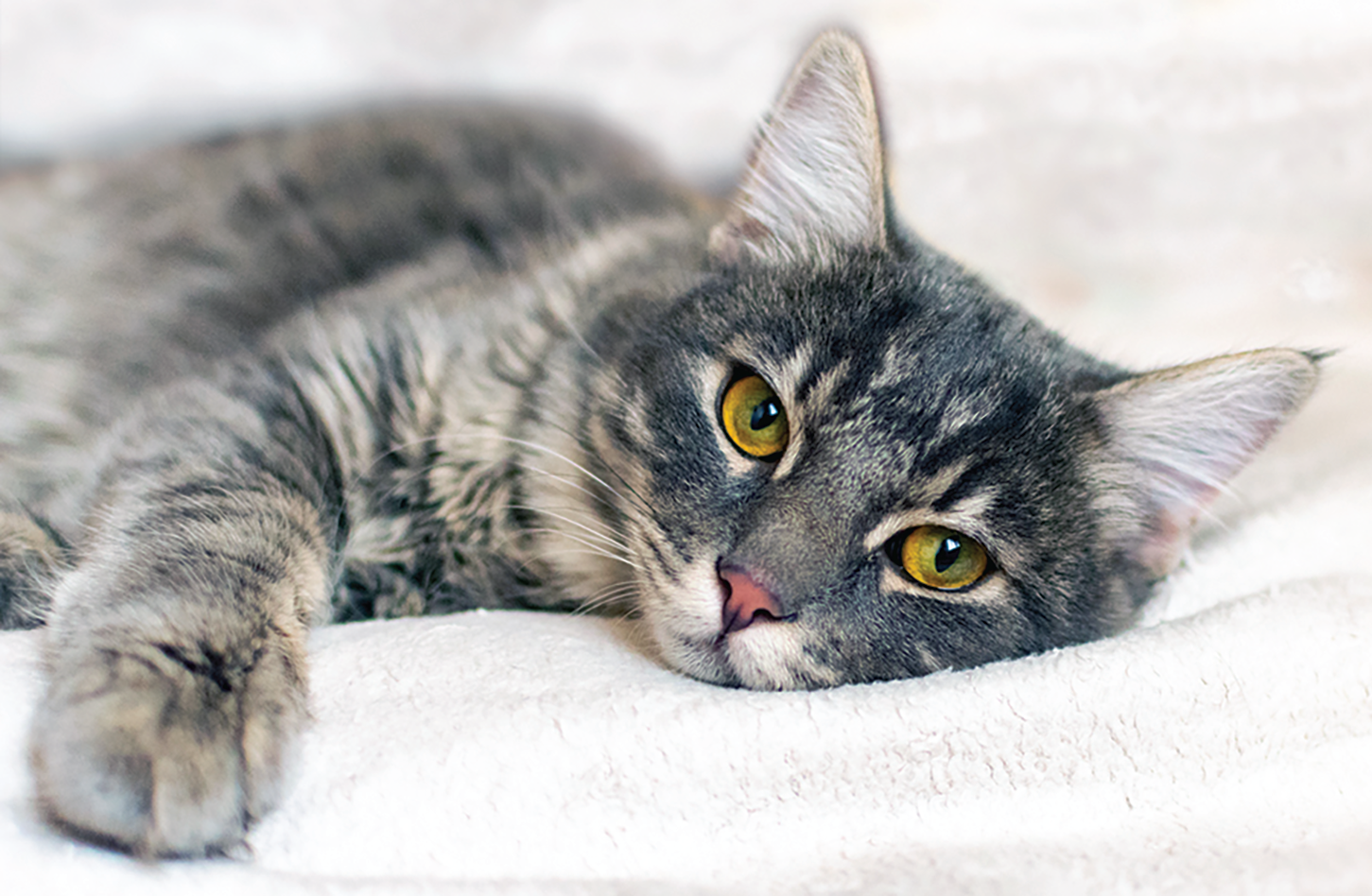Suddenly your cat doesn’t seem quite right. He’s lost his typically robust appetite, he seems lethargic, and worse, he’s vomiting. You also recall that, over time, he seems to have been losing weight. These subtle signs may add up to a difficult-to-diagnose condition called pancreatitis. Prompt veterinary attention is called for.
Why is a pancreatitis diagnosis so tricky? It begins with the often vague and non-specific symptoms that cats with pancreatitis usually demonstrate, combined with their notorious ability to hide low-grade symptoms of disease. These factors, combined with the well-known difficulty in identifying pain in cats, can make it seem like an illness has come on all of a sudden, when in reality the problem may have been smoldering for months.
While diagnostic advances, including currently available feline-specific pancreatitis tests and wider access to diagnostic ultrasound, have dramatically improved our ability to accurately diagnose pancreatitis in cats, a definitive diagnosis can still be challenging.
A 2021 consensus statement published by the American College of Veterinary Internal Medicine raised concerns about this horrible disease. The experts cited a study that showed 66.1% of 115 cats undergoing necropsy at the University of California Davis had evidence of pancreatitis, and 45% of apparently healthy cats in the study had pancreatic lesions.
Pancreatitis Causes
Most often, the origin of pancreatitis is not known, although there are a few things we know are associated with pancreatitis in cats. These include trauma to the abdomen, anesthetic complications, certain medications (like chemotherapy), hypercalcemia (excessive calcium in the bloodstream), and a couple of infectious agents including toxoplasmosis and feline infectious peritonitis (FIP). An immune-mediated cause has been suggested and is currently under investigation.
Interestingly, there are two things we know do not predispose cats to pancreatitis: obesity and high fat diets, which are common causes of pancreatitis in dogs and humans.
Further, pancreatitis in cats is frequently found in conjunction with inflammatory bowel disease and cholangiohepatitis (inflammation of the bile ducts, gallbladder, and surrounding liver tissue), so much so that this situation has earned itself the name “feline triaditis,” although no definitive cause/effect relationship between these three entities has been established.
Symptoms
Signs of pancreatitis may be subtle, and they are usually non-specific. The most common signs are lethargy, lack of appetite, and vomiting. Weight loss happens over time.
Diagnosis
A diagnosis is harder to come by without a biopsy, but we’re not necessarily going to do that on every cat.
Diagnosis is usually made using a combination of symptoms, results of bloodwork (including the very useful feline-specific pancreatic lipase test), and abdominal ultrasound findings. In some cases, obtaining a small sample of the pancreas for microscopic analysis via a small needle that is passed through the abdominal wall (called a fine needle aspirate) can be helpful.
Treatment
While specific treatment focused on addressing the cause of a disease is preferable, this is most commonly not possible with feline pancreatis, as the cause of this condition is largely unknown. In most cases, a veterinarian’s only recourse is to treat symptoms and be generally supportive.
The goals of treatment are pain management, prevention of dehydration, protection of the lining of the stomach, normalization of blood electrolytes, alleviating nausea and vomiting, and getting affected cats to eat as soon as possible.
The reasons for pain management in cats with pancreatitis are obvious. Pain delays healing and increases both physiological and emotional stress. The most common pain medications prescribed for pancreatitis in cats are the opioids buprenorphine and fentanyl. Gabapentin, an increasingly popular neuropathic pain reliever, can be added if additional pain relief is needed.
Dehydration can be addressed and prevented with intravenous fluid therapy, and the composition of the fluids administered can be tailored to address the metabolic derangements that cats with pancreatitis can experience.
The go-to drug for vomiting in both dogs and cats is usually maropitant (Cerenia, which is manufactured by Zoetis). It works in the vomiting-trigger zone in the brain and is fast-acting, safe, and commonly effective.
In severe cases, another anti-emetic drug called ondansetron can be added to maropitant therapy. Various gastric protectants may also be used to protect the lining of the stomach from ulceration and the esophagus from the acidic material that is passed through it during vomiting.
Mirtazapine, which is technically an anti-depressant drug, has some anti-vomiting effects as well, but it is mostly used as an appetite stimulant for cats. Getting cats with pancreatitis eating as early as possible is important to their recovery. Food in the gastrointestinal tract stimulates intestinal motility, which enhances blood flow.
Because this is so important, anorexic cats with pancreatitis should have feeding tubes placed. Keeping them eating is equally important to avoid the potential consequences of prolonged anorexia, which include hepatic lipidosis (fatty liver) and cachexia (muscle wasting).
Bottom Line
Perhaps the most important takeaway from the 2021 ACVIM consensus statement on pancreatitis in cats is that this is a common, serious disease. We need to continue scientific study and research on this disease so that we can better help our cats live their best, healthiest lives.
What You Should Know
Pancreatitis in cats is a serious problem because:
- In most cases, its cause is unknown.
- There is no targeted, definitive treatment for it. Treatment, while important, merely addresses symptoms.
- It is likely much more prevalent than previously suspected.
- It can lead to chronic, irreversible damage to the pancreas, perhaps predisposing to other diseases, including diabetes and exocrine pancreatic insufficiency.
- It is a disease in need of more research and veterinary awareness.




